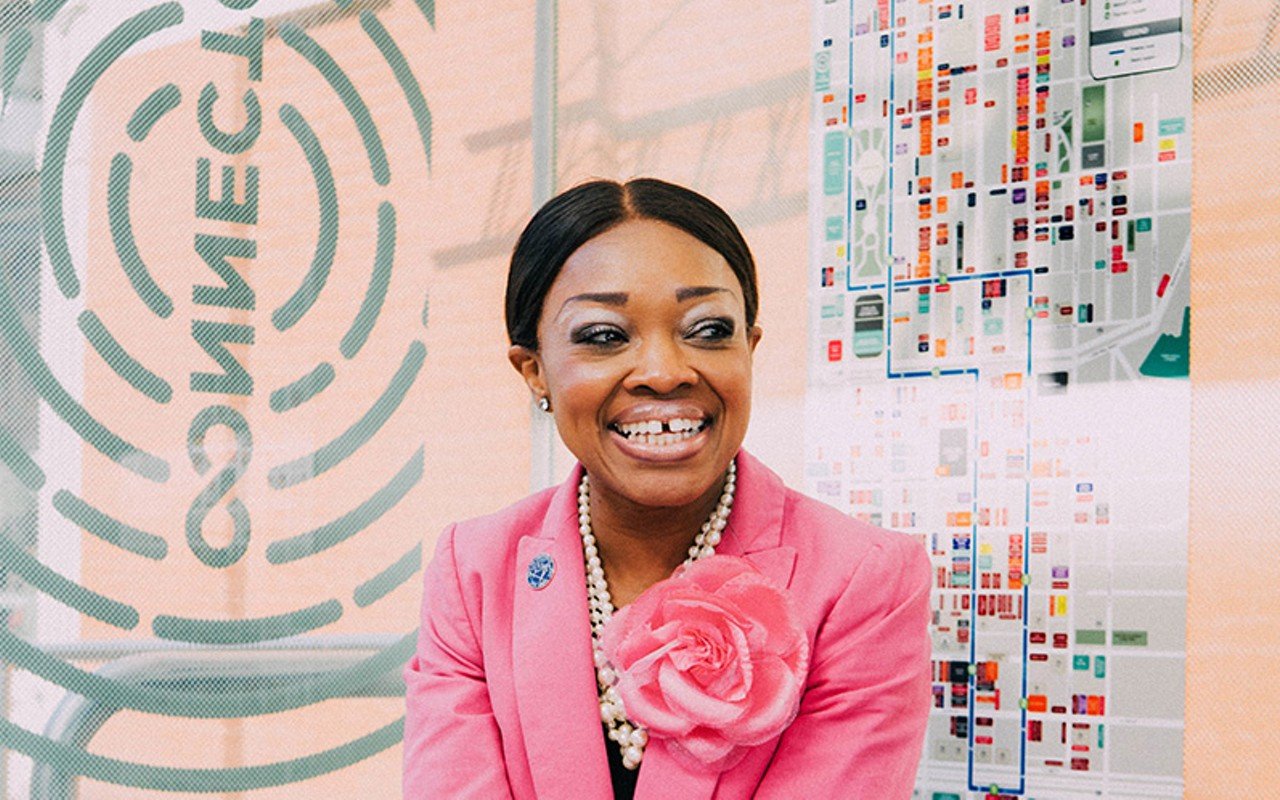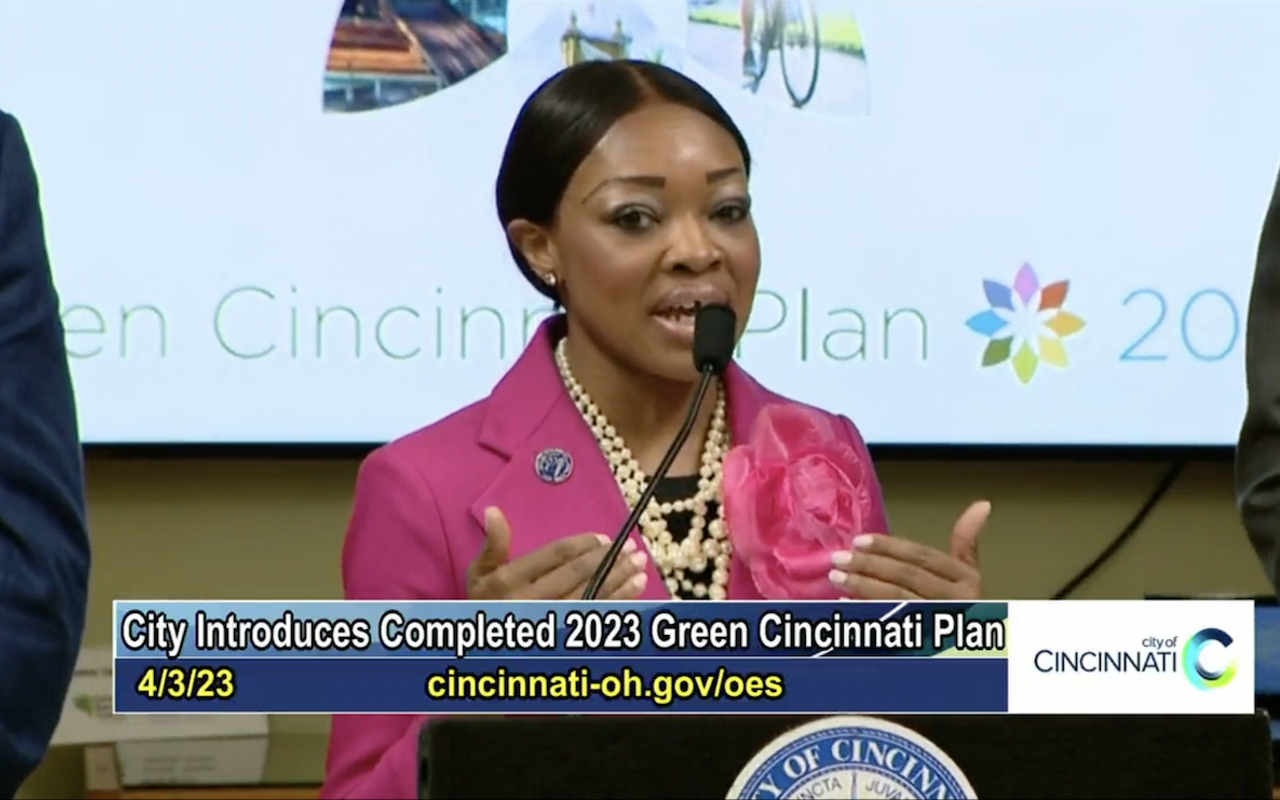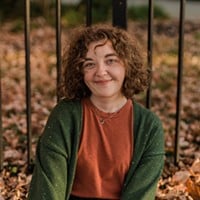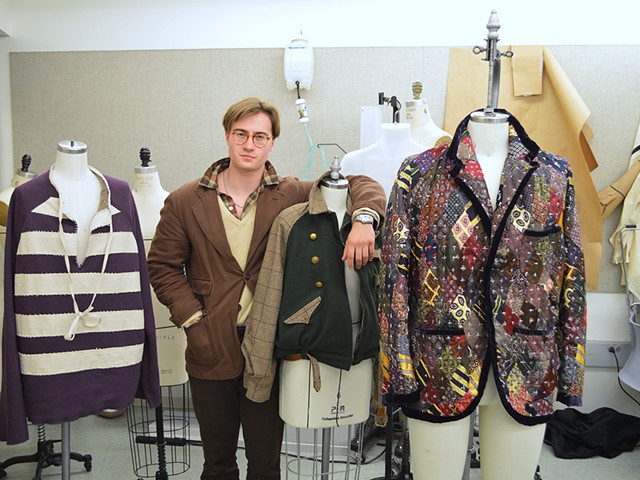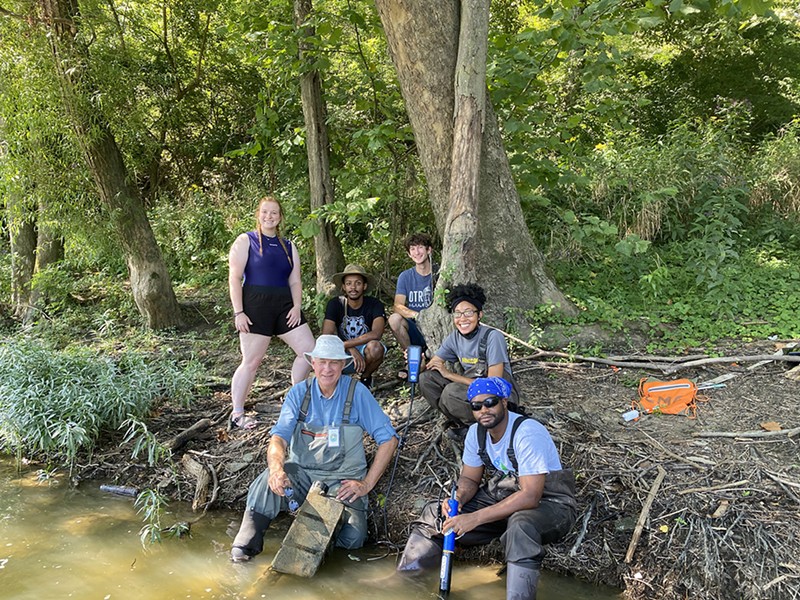
This story is featured in CityBeat's May 17 print edition.
Sea creatures have made their way to Ohio this spring and summer via the Lloyd Library and Museum’s exhibit The Mighty Deep: An Exploration of Sea Life. The carefully-curated exhibit features ichthyology illustrations and records of various fish, shells, crustaceans, algae, seaweed and kelp.
Walk into the Lloyd and you’ll likely notice the exhibit’s banner, just outside the adjacent gallery. On it reads a quote by nature writer and marine biologist Rachel Carson: “The sea has always challenged the minds and imagination of men and even today it remains the last great frontier of earth.”
The Mighty Deep, which runs through July 28, unearths treasures from the Lloyd Library’s collection that explore coastal environments, aquatic life and pharmaceutical marine plants. The adjacent gallery features larger, vibrant prints of a loggerhead turtle, land crab, angel fish, flying fish, rudderfish and freshwater perch. Each print in the adjacent gallery was pulled from 18th-century naturalist Mark Catesby’s The Natural History of Carolina, Florida and the Bahama Islands.
But there’s just as much to explore in Midwestern waterways and natural habitats. Museumgoers can enjoy programs throughout the exhibit’s run, including “Groundwork: Where Justice and the Environment Meet," which is held on May 25 at 7 p.m. The event will feature Groundwork Ohio River Valley's Jaeydah Edwards and Luis Aguilar, who will discuss the environmental nonprofit's initiatives.
“It’s really rewarding to work with the youth and residents to talk about water quality and what’s going on in their backyards, essentially,” says Edwards, who serves as Groundwork’s citizen science program director. “We’re in one big watershed and what everybody does affects not only Cincinnati, but it’s going into the Mississippi and the Gulf of Mexico.”
Groundwork has three goals, as stated on their website: “Pursue a future in which everyone’s neighborhood environment is green, healthy and resilient; undo legacies of poverty and racial discrimination; break the trend of widening disparity between communities that are enjoying a renaissance and communities that are experiencing disinvestment, neglect and deepening poverty.”
Groundwork has various on-the-ground initiatives to meet those goals. One of them is the Green Team: a program that works with local high school students to help them better understand the environment, learn green industry job skills and improve various spaces in Greater Cincinnati.
Aguilar, who directs the Green Team, says they equip students to do conservation work with other community organizations. Many of the programs are year-round, except for winter. This year, they’re aiming to have 80 to 90 kids working with them on everything from invasive species removal to restoration work to air and water quality projects.
Aguilar doesn’t expect everyone who goes through the Green Team to leave as environmental scientists but rather to have a working knowledge of topics and issues facing their communities.
“For the kids that come in from these communities, they are vulnerable. Sometimes they’ll come in and they want to do the program and they’re supporting their families, in a way,” says Aguilar. “My goal is to make sure that, yes, this is a job. But when they exit the program, I want them to be more informed citizens for Cincinnati.”
At the Lloyd Library event, Edwards says they plan to give a deep dive into the organization as a whole and its various programs, including Citizen Science, Green Team and Climate Safe Neighborhoods. The latter looks at the relationship between the city’s history of redlining –– meaning the practice of race-based housing segregation –– and the current (and predicted) impact of the climate crisis on those neighborhoods.
“The climate crisis is more severe in certain neighborhoods,” says Edwards. “For example, Lower Price Hill has the lowest tree canopy coverage in the whole city of Cincinnati. Less tree canopy coverage makes it hotter, so it’s increasing the urban heat-island effect.”
Beyond finding the why, Edwards adds that they also help residents build and apply resiliency plans to fight the climate crisis; in doing so, those living within neighborhoods can voice what they want to see in their community, whether that be planting street trees, adding misting stations at bus stops or a green roof.
“People know what they want to see in their neighborhoods and they know what they want to see to make a change,” says Edwards. “But there’s a disconnect on how to make it happen. It’s very important, in my opinion, to let people know that their opinions and their voices are important and to empower them to have their voices heard.”
As for Citizen Science, Edwards says the program works with businesses, residents and the Green Team to monitor air quality. In Lower Price Hill, they placed monitors in both residential and industrial parts of the community, as well as in and outside of homes, to compare levels at different sections. According to Edwards, the program has only grown from there.
Citizen Science also has water quality programs. Green Teamers get to perform macroinvertebrate testing. Some macroinvertebrate organisms –– critters like mayflies, dragonflies, crayfish and snails –– are more sensitive to pollution than others. In water quality testing, their presence (or lack thereof) can indicate how polluted (or “clean”) any given stream site may be.
At the talk, the duo will also cover Groundwork’s partnership with the Miami Conservancy, in which they go out in the summer and collect data from four locations along the river.
When speaking on the preservation of waterways here in Ohio, Aguilar says the historical context of what water sources were like pre- and post-industrialization is important. But they also ask: What can we do now? This year, Aguilar says they plan to amp up the water quality aspect of their program, immersing youth even more into the work.
“Where we come in is not to scare our audience, not to push them away from it, but to involve them,” says Aguilar. “I think the significance of our Citizen Science program –– that Jaeydah is operating –– is that it provides an opportunity for them to engage at a fundamental state.”
“Groundwork: Where Justice and the Environment Meet” will be held at 7 p.m. on May 25 at Lloyd Library, 917 Plum Street, Downtown. Info: lloydlibrary.org.
Subscribe to CityBeat newsletters.
Follow us: Google News | NewsBreak | Reddit | Instagram | Facebook | Twitter

